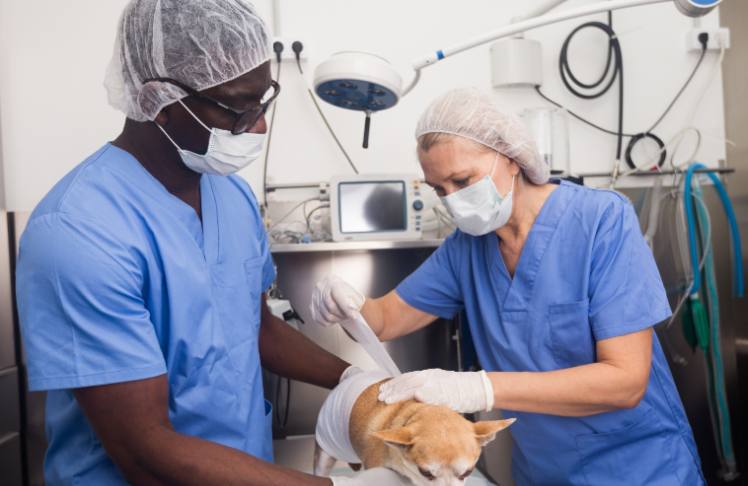Finances FYI Presented by JPMorgan Chase
Vet bills can be expensive, and no one wants to be in the position of not being able to pay when our beloved pets need medical attention. Pet insurance can provide owners with peace of mind by covering some emergency and illness expenses. How do you decide if it is the right financial choice for you and which is the right plan?
What Is Pet Insurance?
Pet insurance is coverage specifically for your pets. You will pay a monthly or annual premium and then receive reimbursements on eligible costs. Most plans will have a deductible and copays.
Generally, pet insurance does not cover routine appointments and acts as a safety net in case of emergencies and illness. Most insurers don’t require you to use in-network or specific veterinary clinics. So, if Fido cuts his paw at 8 p.m. on a Friday, you can find a 24-hour emergency clinic and do not need to wait until Monday.
What Types of Plans Are Available?
There are three standard pet insurance plans.
- Accident and Illness Coverage provides coverage for both injuries from accidents and illnesses.
- Accident-Only does not include coverage for illnesses.
- Preventative includes coverage for wellness costs such as check-ups and vaccines. Not all plans have the preventive care option. Those that do usually offer it as an add-on rather than providing it on its own.
How Much Does it Cost?
The North American Pet Health Insurance Association reports that the annual cost for accident and illness pet insurance plans was $584 for dogs and $130 for cats in 2021. Accident-only policies averaged $239 for dogs and $130 for cats. Most premiums will increase as the pet ages.

Is Pet Insurance Right for Me?
The North American Pet Health Insurance Association reports that almost four million pets (cats and dogs) were insured in 2021, up 28% from the previous year. This is less than 3% of the entire pet population of 160 million in the United States. So, is it right for you?
You can’t predict if your pet will need emergency vet assistance. But you can predict the financial and emotional impact if they do. If faced with a thousand-dollar or more medical bill for your pet, would you be able to cover that cost? How would you feel if you needed to decide between your pet’s health and possibly life and financial hardship?
Remember that most plans do not cover pre-existing conditions and have a waiting period. So, it won’t be a solution for your pet with a current costly diagnosis or injury. Insuring your pet when they are young and healthy is the best time to safeguard against potential illnesses and accidents.
Also, while pet insurance will cover some of the cost, you typically need to pay upfront. So, if you don’t have savings available for large bills, you’ll need a credit card to make the payment until your reimbursement comes through.
What Are My Other Options?
Many owners will spend less on pet bills than their monthly insurance premiums. It is a good idea to explore other options. Instead of paying a premium, put that money into a designated savings account for pet emergencies. If you never have one, you and Fido can take a nice vacation together instead.
Other options include seeking care at a low-cost clinic such as a shelter or veterinary college. AlignCare assists qualified low-income families with pet care, and several charity organizations offer grant programs. You could also seek financial help from friends and family or with crowdfunding such as GoFundMe.
Paying a monthly payment for pet insurance may be the best way to safeguard your financial well-being in case of an emergency or illness. If you decide it is the right option, compare premiums, deductibles, copays, and what medical expenses are covered. Remember, you never know when a pet emergency will arise.
Finances FYI is presented by JPMorgan Chase. JPMorgan Chase is making a $30 billion commitment over the next five years to address some of the largest drivers of the racial wealth divide.
























